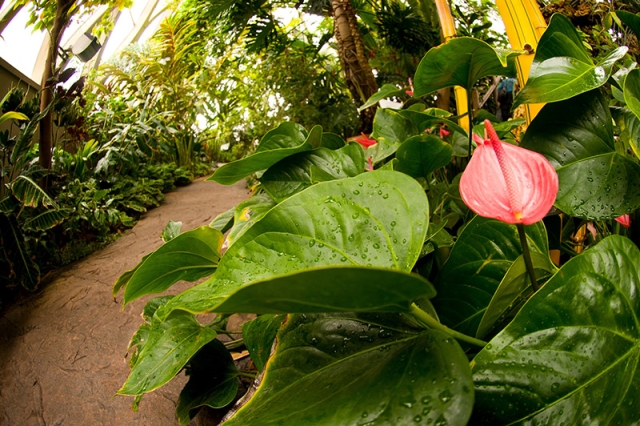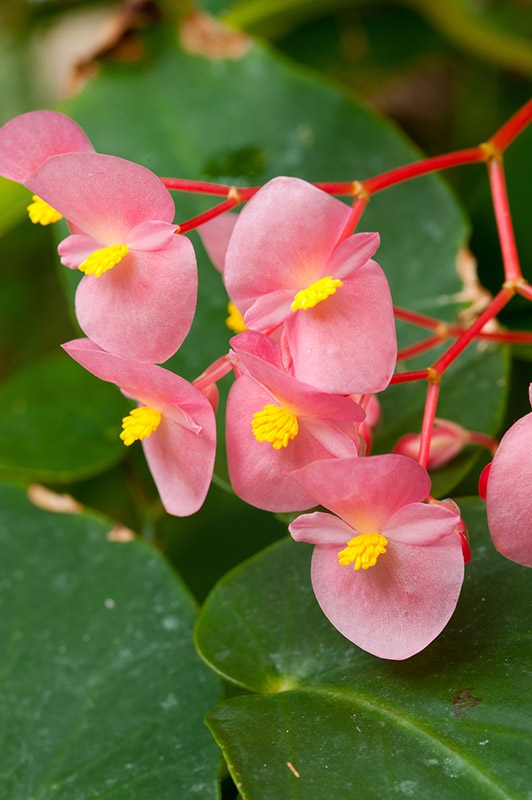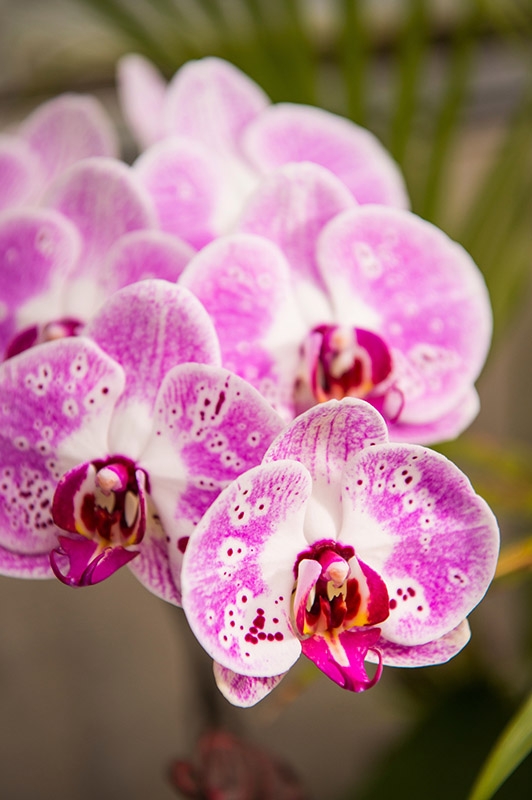Tropical Houseplant Care 101
At the Gardens we have a large collection of tropical plants that live in the Boettcher Memorial Tropical Conservatory and in our plant collections greenhouses. Much of this collection could suitably be considered houseplants.
Houseplants can be as beneficial as they are visually appealing. Growing plants in your home can improve mood, reduce fatigue, lower stress, and increase oxygen and humidity in the air.

Anthurium 'Pink Champion' flamingo flower
When choosing plants for your living space, pay attention to the conditions in your home: sun exposure (which changes quite drastically over the course of the year), average temperature of the living space, amount of space you can dedicate to your plants, what pets might be exposed to the plants.
Because of the vast array of houseplants available, it is best to grow what will do well in your conditions. Eight hours of direct light is considered full sun. Plants that will be happy with six or more hours of sun include cacti and succulents, croton (Codiaeum variegatum), Dracaena, palms, cycads, Hibiscus or Strelitzia. Some plants that do well in medium light (three to six hours of sun) are orchids, Pilea, gesneriads, African violet and Begonia. Finally, plants that do well in low light are Spathiphyllum, ferns, Dieffenbachia, ivy, Philodendron, Calathea and Anthurium.

Begonia coccinea 'Pink Shasta' angel wing begonia
Now for some general care tips for successfully growing houseplants:
- In general, don’t overwater – this is (in my opinion) the most important and the hardest thing I ever learned. Roots breathe oxygen and if soil is constantly saturated, roots will rot, and the plant will die. Obviously, some plants need more water than others but a good general schedule for most is saturated for a day or so, two to three days of medium dryness and a day or two on the drier side. It’s okay for plants to begin to wilt so long as they don’t get crispy.
- For potting and placing your plants, be sure not to overpot them too much, i.e. gradually move them into the next appropriate size. Also be sure to rotate plants that receive light from only one side.
- From time to time your plants may get bugs on them. It happens to everyone, and the closer you pay attention to your plants the less frequent and extensive the outbreaks will be. I like to remove dead leaves and examine the entire plant for bugs on a regular basis.

Phalaenopsis hybrid - moth orchid
You will get out of houseplants what you put into them. Plants can often be overlooked in the home, but they do need attention and care. If at first, you are not successful, keep trying! I’ve certainly killed my share of plants and will kill more in the future.
A version of this blog post and photos first appeared as an article in Life on Capitol Hill, November 2020.
Add new comment